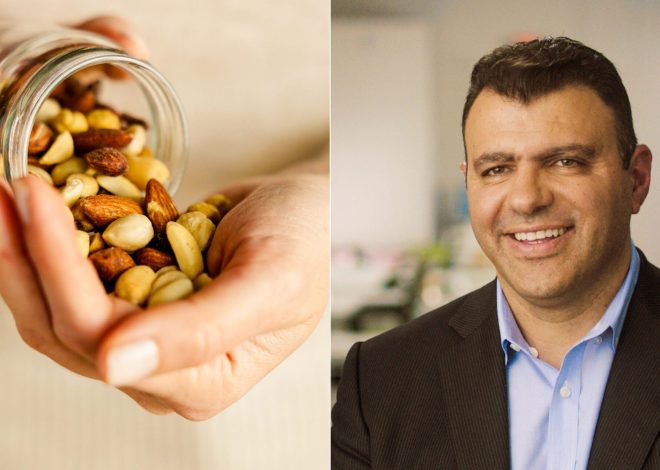
You probably have it at home: Simple spice is really good for digestion
We know pepper primarily as a spicy spice in the kitchen that gives meals a pleasant spiciness.
But the fact that pepper can also be used as a medicinal remedy has almost been forgotten. The green, white, red or black spice is a natural medicine that most people have on their kitchen shelves anyway.
ADVERTISEMENT
Pepper supports the intestinal flora and lifts the mood
The alkaloid piperine contained in pepper promotes blood circulation throughout the body; this causes more saliva to be produced in the mouth and more gastric juice to be produced in the stomach. This stimulates the appetite and also means that heavy food is digested better and faster due to the increased amount of gastric juice.
Good for digestion: Pepper tea helps with constipation
To combat constipation, you can easily prepare a pepper tea:
- Pour 250 milliliters of boiling water over one teaspoon of black peppercorns and two tablespoons of peppermint leaves and let it steep for ten minutes.
- Strain the tea and drink it in small sips.
However, if you have diarrhea, gastritis or a stomach ulcer, it is advisable to avoid pepper.
Advertisement
Piperine also triggers a pain signal in the body. This causes the body to release endorphins, which improve your mood. Piperine also slows down the breakdown of the happiness hormone serotonin: you feel better for longer with pepper than without. The breakdown of dopamine is also inhibited, which means you can concentrate better for longer.
It is worth seasoning your meals with tasty pepper for a variety of reasons. If you don’t like it too spicy, green pepper is the best choice, as it is comparatively mild, while those who like spicy foods are better off with black pepper, as it contains the highest concentration of piperine, which gives it its spiciness.
Pepper relieves cold symptoms
Cold symptoms such as an increased feeling of cold (“shivers”) are also alleviated by pepper: Thanks to the circulation-stimulating effect of piperine, pepper literally makes you feel warm.
When you have a fever, your body will start to sweat more quickly after taking pepper, which cools the body and causes the fever to subside more quickly.
Compared to chili or cayenne pepper, pepper is moderately spicy and is therefore suitable for people who do not like or cannot tolerate excessive spiciness. Pepper also stimulates the mucous membranes of the lower and upper respiratory tract to produce more mucus, thereby helping to get rid of bacteria more quickly by coughing or blowing the nose.
How to make a simple anti-cold drink from pepper
You can take advantage of all these effects with a simple cold drink with pepper. This is how the drink is prepared:
- Pour 250 milliliters of milk or a milk alternative into a saucepan.
- Add a tablespoon of honey and a pinch to a teaspoon of freshly ground pepper.
- Bring the mixture to the boil briefly, pour it into a cup and drink it in small sips while it is still warm.
You can drink the pepper drink two to three times a day. How much pepper you add depends on how much spiciness you like and can tolerate. It is recommended that you start with a small pinch and test out how much pepper suits your personal taste.
Tip: A pepper compress also helps against typical cold symptoms and promotes healing.
For tense muscles: apply pepper oil
The circulation-stimulating effect of pepper can also be used in a pepper massage oil, which helps to relieve tension and sore muscles.
This is how the pepper massage oil is made:
- Pour 200 ml of olive oil with about 16 grams (about two tablespoons) of lightly crushed black peppercorns into a screw-top jar.
- Close the jar and leave it in a warm place for two weeks. Shake occasionally so that the active ingredients in the pepper can dissolve better.
- Sieve the peppercorns and pour the finished pepper oil into a tightly sealable bottle.
If stored in a cool place, the oil will last for one to two years.
To use, spread a little oil on your hands and massage it into the tense parts of the body. It is better to avoid areas of skin with neurodermatitis or psoriasis.
Tip: To increase the effect of the oil, you can add some dried chili flakes to the oil mixture. Optionally, 20 drops of rosemary or juniper essential oil each will increase the effect and provide a pleasant scent. If this oil is not strong enough for you or you don’t have time to massage, you can also make your own warming chili ointment and apply it to your skin.
What is pepper actually and where does it come from?
Peppercorns are the fruits of the pepper plant ( Piper nigrum ), a climbing plant that was originally native to southern India, but is now also grown in Indonesia, Malaysia, Vietnam and Brazil. The most important component of pepper is piperine, which is not only good for our health, but also preserves meat and fish. It was precisely this preservative effect that made pepper a much-traded commodity from ancient times to the Middle Ages, and its weight was sometimes worth its weight in gold due to the long transport routes.
What is the difference between green, black, white and red pepper?
Whether black, red, white or green peppercorns: they all come from the same pepper bush and were just harvested and processed at different times:
- Green pepper consists of unripe peppercorns that are quickly pickled in brine or vinegar after harvesting or dried or freeze-dried so that they retain their color. Green peppercorns are only mildly spicy.
- Black peppercorns are produced when green to greenish-yellow, not yet ripe fruits are first dipped briefly in boiling water and then dried in the sun. Black peppercorns are the hottest of the peppercorns.
- White peppercorns are made from fully ripe red peppercorns: The red peppercorns are left in running water for one to two weeks until the shell has come off. After another peeling process, they are dried. Parts of the harvest are exposed to sunlight to bleach them further. The white grains are spicy without much of their own flavor, which can be used specifically depending on the dish.
- Red peppercorns are fully ripe, unpeeled pepper berries. They are rarely found in stores and are usually pickled in sour or salty flavors, like green pepper. They are rarely available dried. Real red pepper is expensive because each pepper berry has to be picked by hand from the pepper vines, on which green, green-yellow and red berries grow simultaneously. Red pepper tastes spicy, fresh and at the same time a little sweet due to the sugar deposits in the ripe berry.
The mild pink pepper that is usually found in pepper mixtures is not pepper, but comes from Brazilian or Peruvian Chinus trees, which belong to the sumac family and are therefore related to cashews and mangos.
How do you recognize good pepper? What you should look out for when buying
Most pepper is grown conventionally and without ecological production methods, which is why many pepper products contain pesticide residues or even mineral oils, which spoil the healthy enjoyment of the spicy grains. In addition, the best quality peppercorns are usually not used for ground pepper.
It is therefore advisable to use organic products and whole peppercorns. Unground peppercorns are far superior in taste to ground pepper anyway, because the volatile essential oils that contribute to the taste are only released at the time of preparation.

Ethel Purdy – Medical Blogger & Pharmacist
Bridging the world of wellness and science, Ethel Purdy is a professional voice in healthcare with a passion for sharing knowledge. At 36, she stands at the confluence of medical expertise and the written word, holding a pharmacy degree acquired under the rigorous education systems of Germany and Estonia.
Her pursuit of medicine was fueled by a desire to understand the intricacies of human health and to contribute to the community’s understanding of it. Transitioning seamlessly into the realm of blogging, Ethel has found a platform to demystify complex medical concepts for the everyday reader.
Ethel’s commitment to the world of medicine extends beyond her professional life into a personal commitment to health and wellness. Her hobbies reflect this dedication, often involving research on the latest medical advances, participating in wellness communities, and exploring the vast and varied dimensions of health.
Join Ethel as she distills her pharmaceutical knowledge into accessible wisdom, fostering an environment where science meets lifestyle and everyone is invited to learn. Whether you’re looking for insights into the latest health trends or trustworthy medical advice, Ethel’s blog is your gateway to the nexus of healthcare and daily living.



